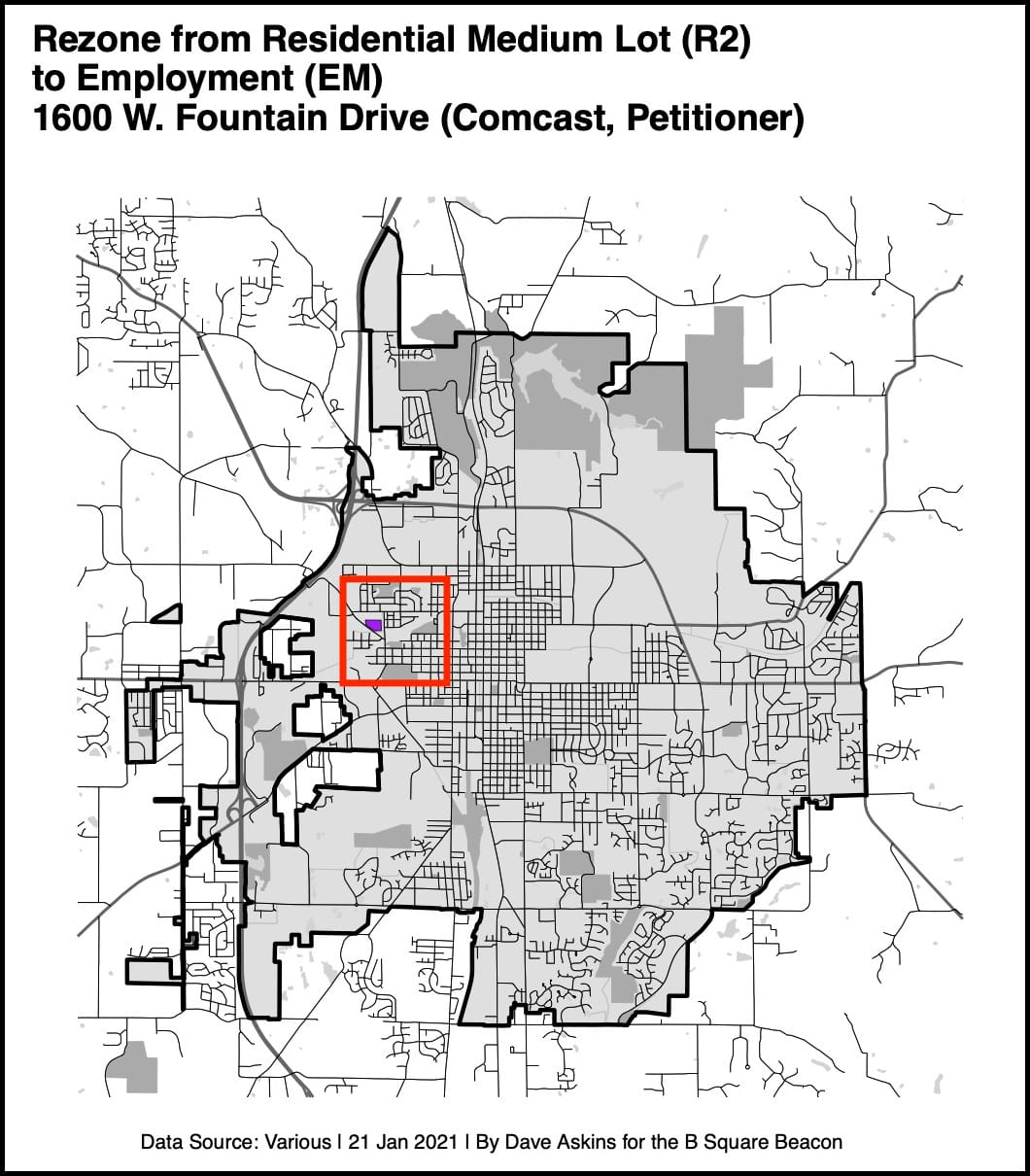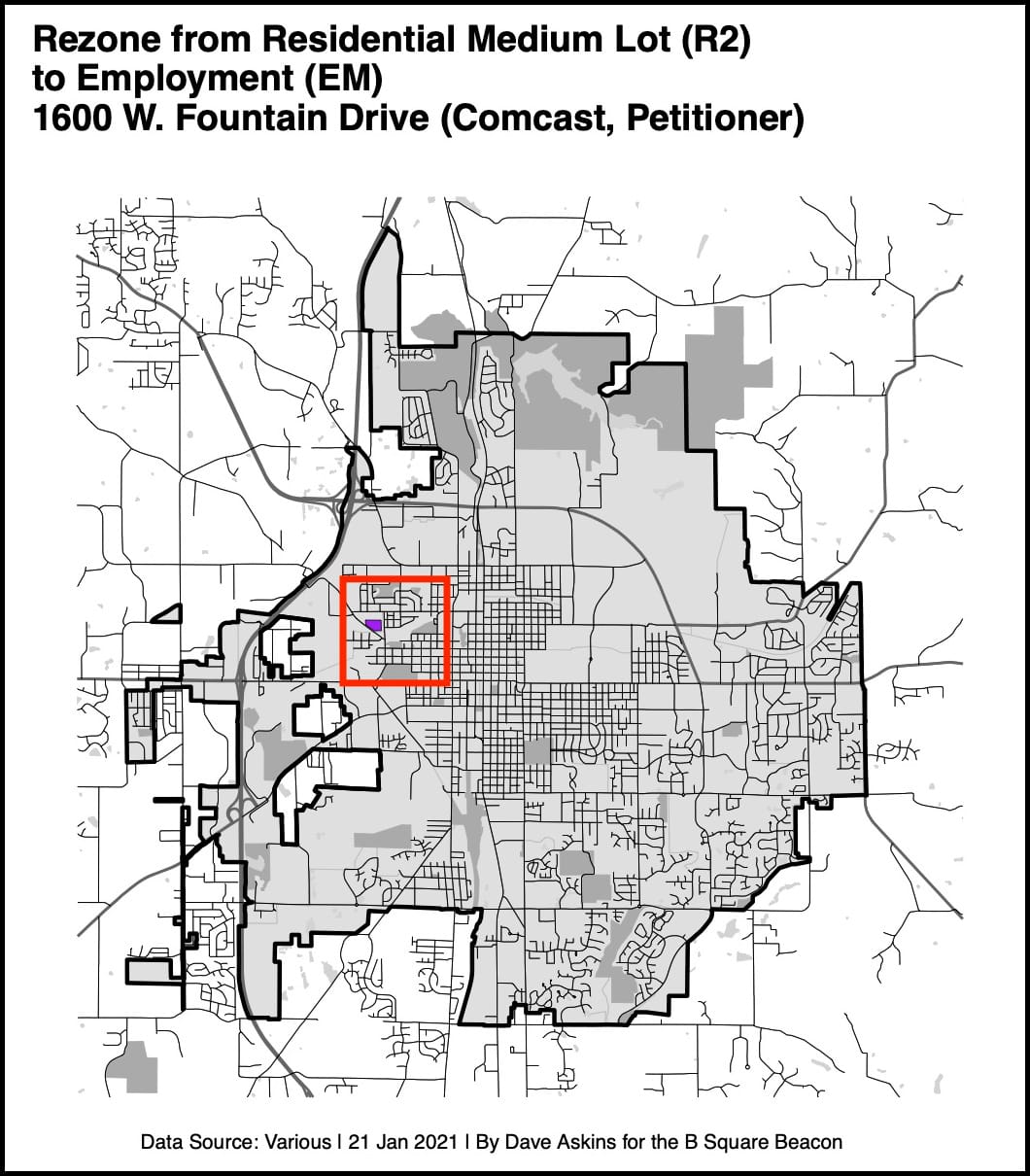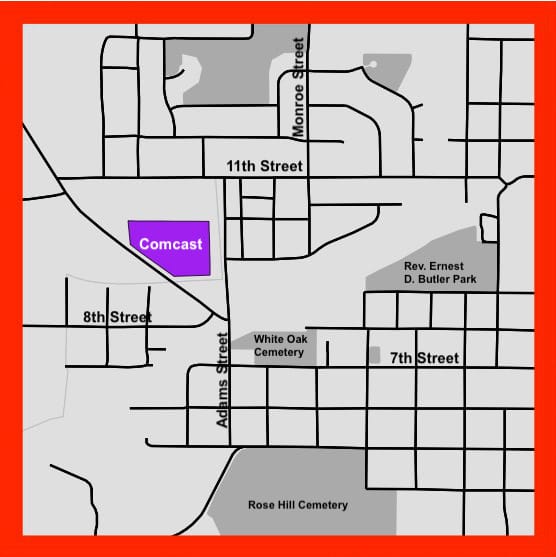Bloomington OKs rezoning for Comcast, because new UDO does not allow use variances




The Comcast property that sits in the wedge formed by Adams Street and West Fountain Drive will eventually not be recognizable by its communications tower.
The dismantling of the tower will be made possible by the construction of a new building on the site, which will expand the kind of equipment that can be housed there.
The construction of the new building will be made possible by the approval by Bloomington’s city council of a rezone for the property, from residential (R2) to employment (EM).
The city council approved the rezoning at its meeting last Wednesday on a unanimous vote. The city’s plan commission had previously forwarded to the council its unanimous recommendation for the rezone.
How is it even possible for a property that is zoned for residential use to be used as a contractor’s yard and communications facility for at least the last two decades?
It’s been possible because of a “use variance.” According to the city council’s meeting information packet, a use variance was granted most recently in 2010, to allow for the construction of a different new building at the site.
The same approach can’t be used this time around, because the recently adopted unified development ordinance (UDO) does not allow for use variances. The UDO was adopted by the city council in late 2019 and affirmed by the plan commission in early 2020.
Without the option of a use variance, Comcast pursued a different possibility, which was to ask for a rezoning.
The zoning requested by Comcast was for an employment (EM) district. That’s similar to, but not identical to the planning staff’s recommended rezoning in connection with a zone map revision that is in the works.
A part of that map revision, the staff’s recommended rezoning for Comcast’s West Fountain property is mixed-use employment (ME). Why not plain employment (EM)?
In his presentation to the city council’s land use committee, which met on Jan. 13, senior zoning planner Eric Greulich, said the staff may have missed one of the elements that makes an EM district a better fit for the property than an ME district.
The use of the land as a building supply shop, like Comcast’s use, isn’t allowed in the ME district. “It may have just been an error on our part that we proposed to rezone this to ME, not realizing the building supply shop wasn’t a permitted use there,” Greulich said.
An EM district allows a building supply shop. That’s why the rezone request was to EM and not ME.
The council’s deliberations in committee, and at last Wednesday’s regular meeting, indicated the rezoning was not at all controversial.
Certain to be controversial are upcoming proposed changes in the zoning map for the whole city. Changes to the zone map would put R4 districts, with allowable uses that include plexes, in places that currently don’t allow plexes. A possible text amendment would add plexes to the allowable uses of other residential districts besides R4.
The citywide rezoning project looks like it has been delayed from the hoped-for consideration by the plan commission in the last half of January. It will now likely get the start of its formal consideration by the plan commission in the second half of February.
The intended approach is for the plan commission to consider the remapping proposal at special sessions, not at its regular monthly meeting, which is set for the second Monday of every month.




Comments ()